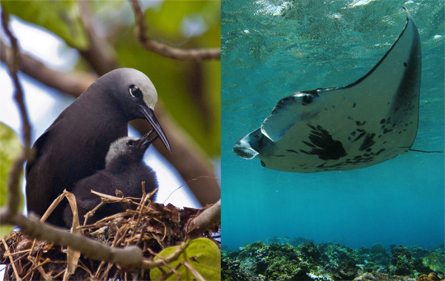By following a pinball cascade of ecological consequences, researchers have traced the far-flung influences of preserving bird-friendly native forests versus replacing those forests with coconut palms on the Pacific atoll of Palmyra.

Red-footed boobies, black noddies and other seabirds that feast on fish nest in the islands’ sturdy, many-branched native trees, says ecologist Douglas McCauley of the University of California, Berkeley. The birds tend to avoid the branch-poor, bendy coconut palms that were planted when people reached the far-flung atoll.
It turns out that the birds’ real estate decisions affect where big fish feed off the coast. The nesting seabirds enrich forest soil with their droppings and carcasses, and water washing out of this rich forest carries about 26 times as much nitrogen as runoff from palm forests. Tiny plankton in the sea flourish on this nitrogen boost. In turn, plankton-feeding giant manta rays prefer waters near native forests instead of near the coconut groves, McCauley and his colleagues report online May 17 in Scientific Reports.






